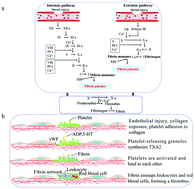Research status and development potential of composite hemostatic materials
Abstract
Bleeding is a serious incident that can occur in people's daily lives or clinics. Bleeding can be caused by accidental trauma, surgery, congenital diseases, or blood disorders caused by drugs. Excessive bleeding in the body can lead to illness or death. Adequate hemostasis is an essential strategy to prevent bleeding to avoid death and is the first step in wound healing. With rapid developments in science and technology, various hemostatic materials have been developed with the hope of enhancing the hemostatic effect by activating different coagulation mechanisms. Some examples are the formation of physical barriers, platelet aggregation, concentration of blood components, and release of clotting factors. The design of composite hemostatic materials should conform to the requirement according to which multiple coagulation mechanisms can be simultaneously activated in order to enhance the hemostatic effect. Combined with the research status of composite hemostatic materials, it has been found that there is still a lack of materials that exhibit high biocompatibility, shape variability, simultaneous usability for both internal and external bleeding, in vivo degradability, ability to camouflage platelets or blood cells, and other clotting-related factors. Therefore, the future development potential and optimization direction for composite hemostatic materials have been proposed through an in-depth discussion on their characteristics and coagulation mechanisms. It is hoped that this review can provide a worthwhile reference for research into hemostatic materials.



 Please wait while we load your content...
Please wait while we load your content...